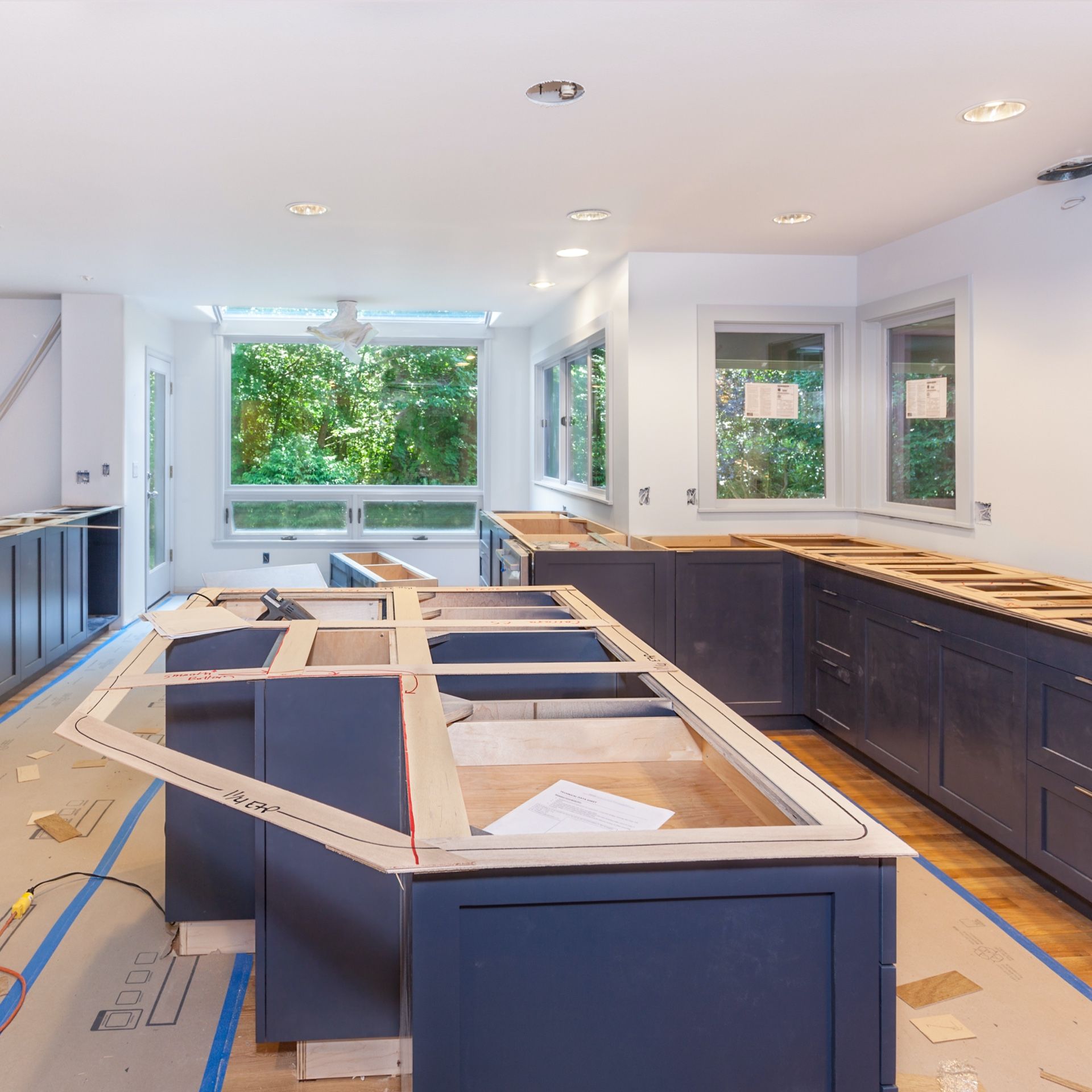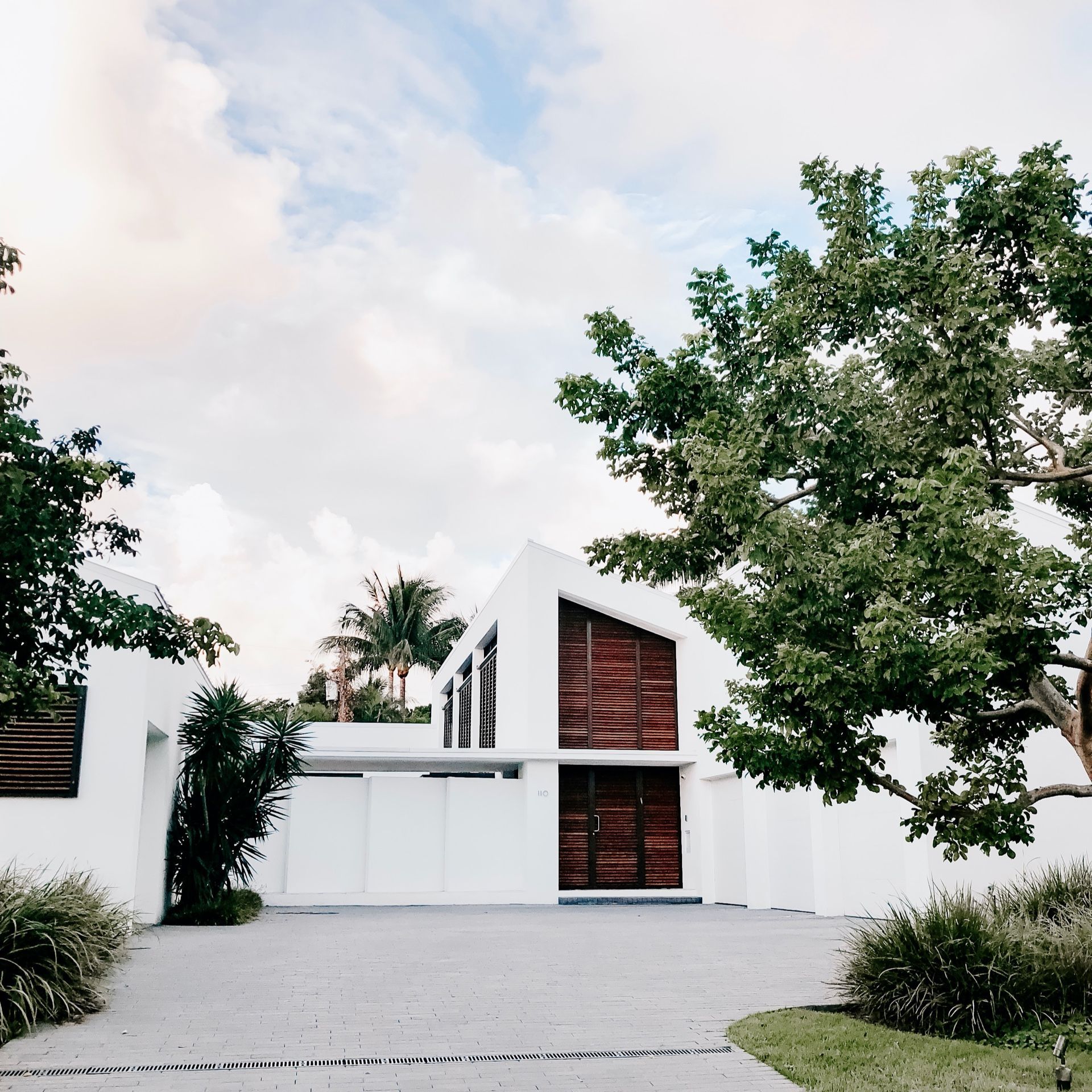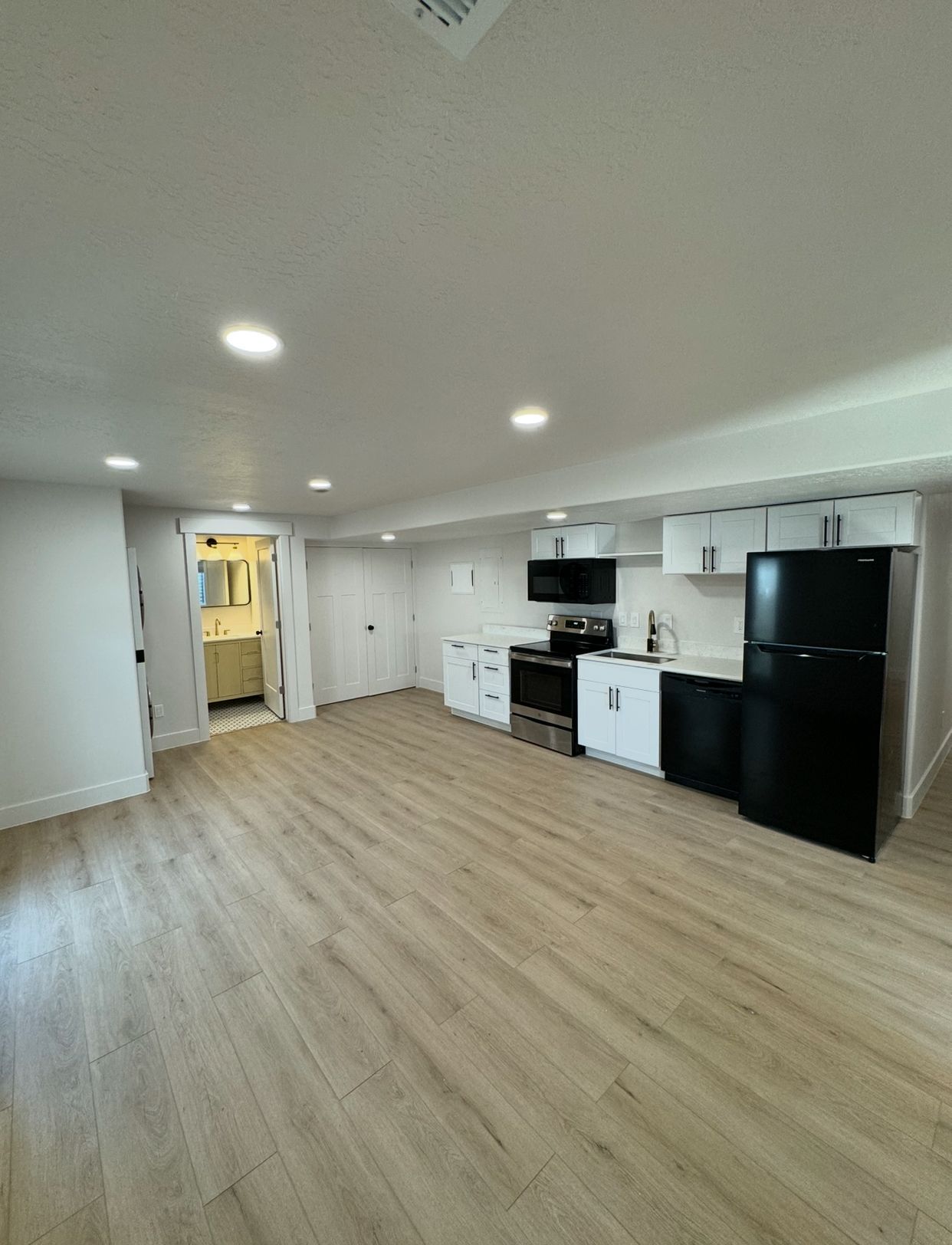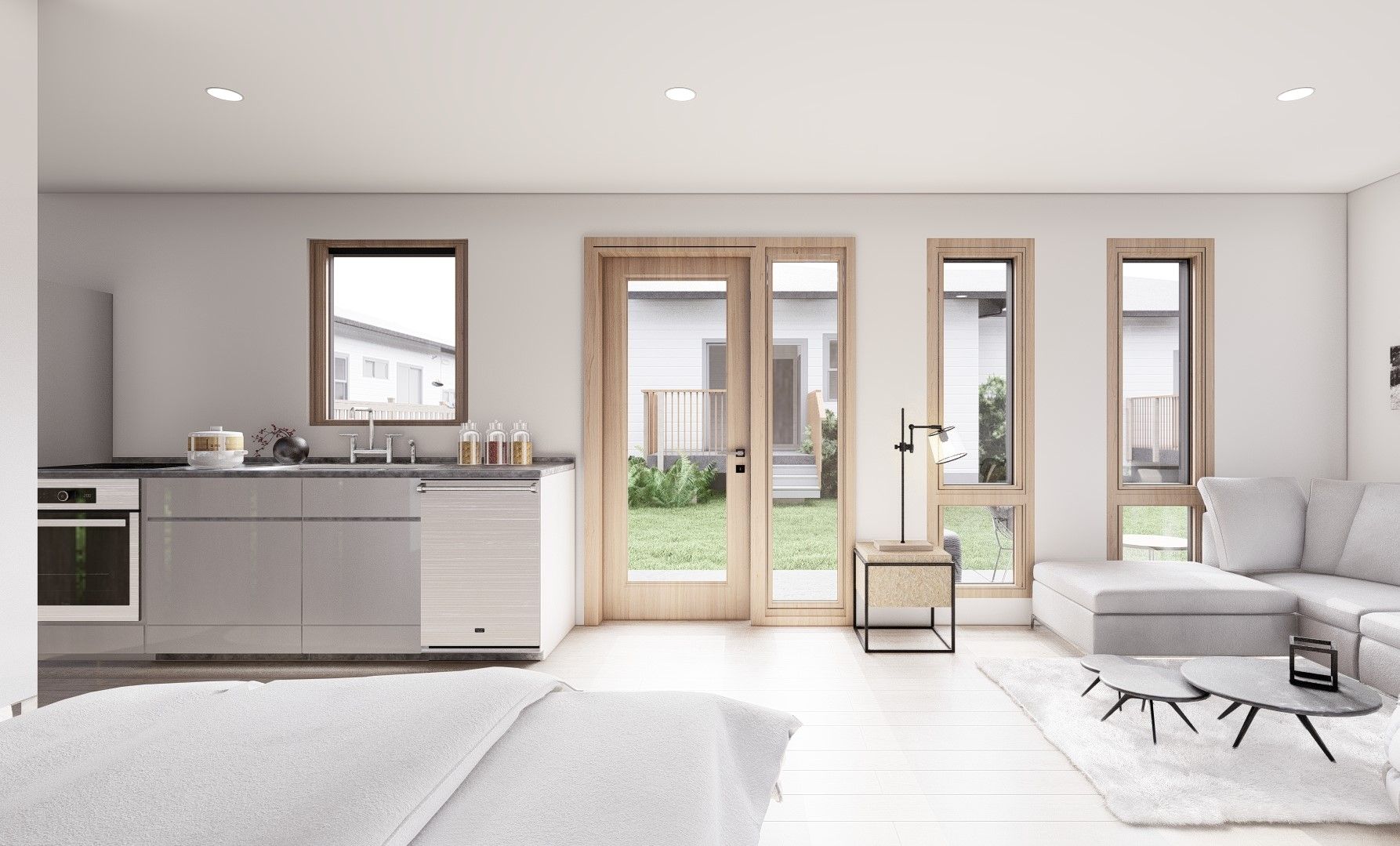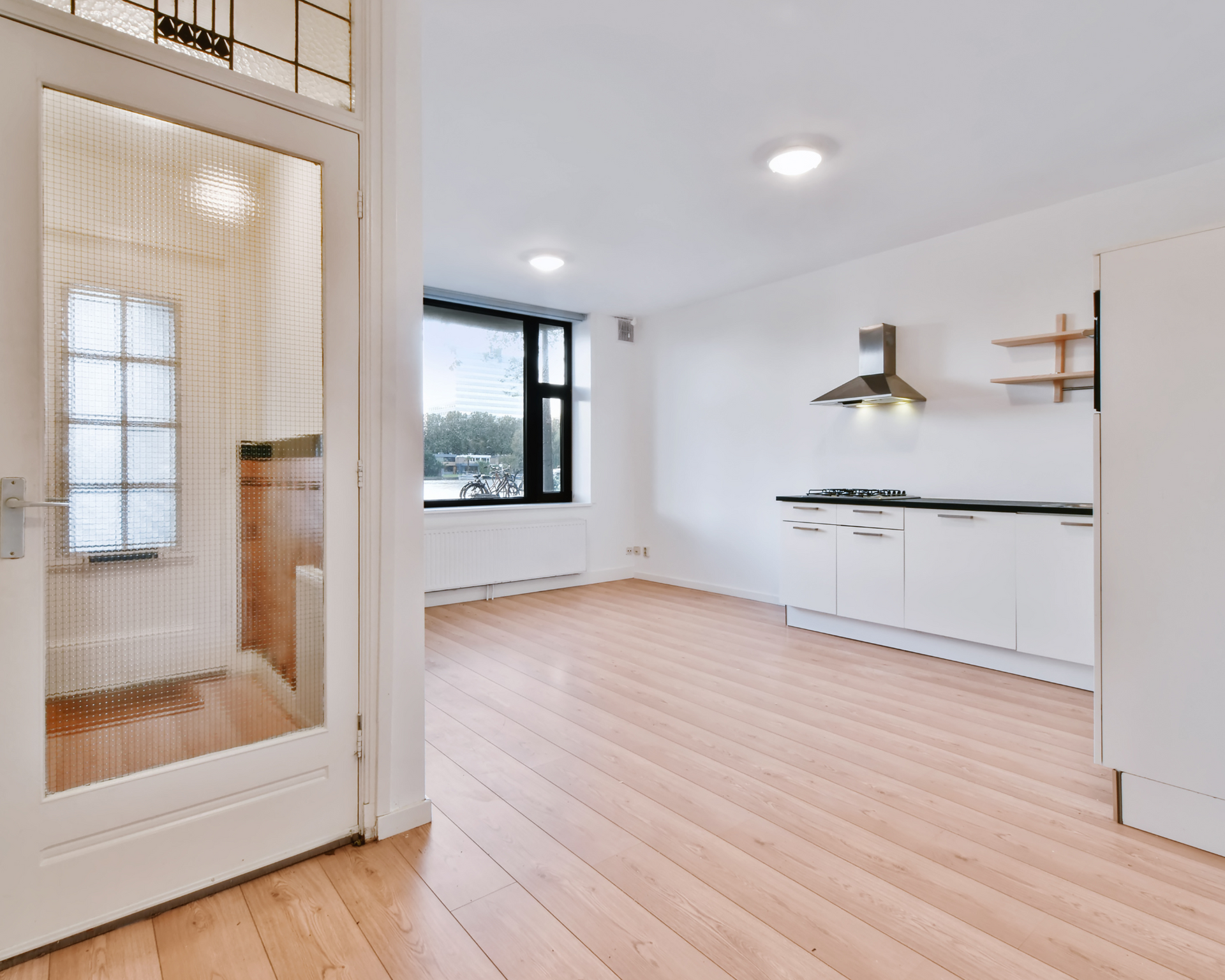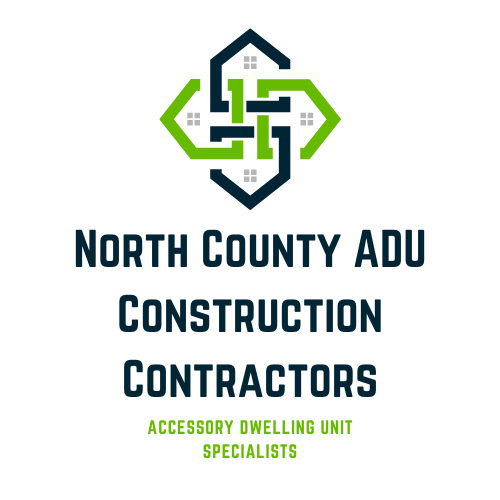How To Finance ADU Construction
Expert Strategies and Tips
Accessory Dwelling Units (ADUs) are becoming increasingly popular as flexible living spaces. They offer homeowners a way to generate rental income or accommodate family members. But the thought of financing ADU construction can feel overwhelming.
One of the most significant steps in financing ADU construction is understanding the available funding options. We can explore various financing methods, such as home equity loans, personal loans, or government programs tailored to support ADU developments. This knowledge will empower us to make informed decisions that suit our financial situation and project goals.
Crafting a solid financing plan involves more than just securing funds. We must also evaluate our budgets, project timelines, and potential returns on investment. With careful planning and the right resources, we can confidently navigate the financing process and bring our ADU projects to life.
Understanding the Costs of ADU Construction
Building an Accessory Dwelling Unit (ADU) involves diverse expenses. It's crucial to be aware of the primary cost factors, differentiate between soft and hard costs, and be prepared for hidden expenses.
Major Cost Factors
The costs of constructing an ADU can vary significantly based on size, design complexity, and location. Materials play a major role; choosing high-end finishes can increase the budget. Location impacts costs too—urban areas might have higher labor costs.
Permitting fees and utility connections can add to expenses. Initial site preparation might be necessary, including considerations for zoning regulations. It's essential to assess current housing market rates and local regulations that may influence the overall cost.
Soft Costs vs Hard Costs
Soft costs include non-physical expenses such as architectural designs, permits, and financing fees. They often constitute a smaller portion of the budget, but can add up quickly. Soft costs also encompass project management fees and consulting expenses, all of which are essential for smooth completion.
Hard costs, on the other hand, refer to the tangible elements of construction—materials, labor, and equipment. These are easily quantifiable and typically represent the majority of the total project budget. Separating these expenses helps in planning and ensuring a comprehensive budget that covers every aspect.
Common Hidden Expenses
Unexpected expenses can arise during ADU construction, often leading to budget overruns. Utility upgrade requirements are a frequent hidden expense, as existing systems may need enhancements to support the new unit. We might also encounter unforeseen site conditions, such as soil quality issues necessitating additional foundation work.
Inspection fees and potential delays, particularly if inspection requirements change, can add to the final tally. Adequate contingency planning and budget allocation are crucial to managing these hidden costs. This awareness allows us to approach ADU construction with a well-rounded perspective and prepare effectively for any eventualities.
Evaluating Your Financing Needs
Before building an Accessory Dwelling Unit (ADU), we must appraise our financial situation. This involves three main steps: estimating the project budget, evaluating our financial health, and identifying any funding shortfalls that may arise during the construction process.
Estimating Project Budget
Calculating a detailed budget for our ADU project is crucial. Factors such as materials, labor, permits, and additional expenses need thorough consideration. We should gather quotes from contractors and suppliers to get realistic cost estimates. Up-front costs may differ based on location, design complexity, and available resources.
We must also allocate a contingency fund, usually 10-15% of the overall budget. This accounts for unexpected expenses that may occur during construction. Additionally, investigating zoning laws and building codes is necessary to avoid future compliance issues that might impact cost.
Assessing Personal Finances
Understanding our financial capacity helps to determine how much we can afford to finance the ADU. We should start by reviewing our credit score, as it significantly affects loan eligibility and interest rates. It's crucial to calculate our debt-to-income ratio, which provides lenders an insight into our fiscal responsibility.
Creating a detailed monthly budget helps track our income, expenses, and savings. This will inform us if adjustments are needed to accommodate potential loan repayments. Ensuring a stable income and a healthy savings account provides financial security and flexibility.
Identifying Funding Gaps
Once we have an estimated budget and understand our financial standing, we need to identify how much we can cover versus what financing gaps exist. This step involves analyzing the difference between available funds and projected costs.
If there are gaps, exploring financing options such as home equity loans, personal loans, or construction loans becomes necessary. We should consider the advantages and disadvantages of each loan type, considering interest rates, repayment terms, and qualification criteria. Additionally, researching government assistance programs or grants can provide financial relief for ADU projects.
Home Equity Financing Options
When we consider financing ADU construction, tapping into the equity we already have in our homes can be a useful strategy. We'll explore Home Equity Loans and Home Equity Lines of Credit (HELOC), both of which leverage home equity to access necessary funds.
Home Equity Loans
Home equity loans allow us to borrow a lump sum of money based on the current equity in our homes. These loans typically have a fixed interest rate, ensuring predictable monthly payments that fit comfortably into our budget. It’s important to note that the interest on these loans might be tax-deductible, though consulting with a tax professional is advisable for clarity.
Approval for a home equity loan depends on factors like credit score, income, and the amount of equity. Because they’re secured by our property, failure to repay may result in foreclosure. We should compare offers from different lenders to find favorable terms and interest rates. Thorough evaluation of our financial situation and repayment capacity is essential before making a commitment.
Home Equity Lines of Credit (HELOC)
A HELOC operates similarly to a credit card by providing a revolving line of credit against our home's equity. We can borrow funds as needed, up to a pre-approved limit. Interest rates are variable, potentially causing payments to fluctuate over time, which requires careful budgeting.
During the draw period, we withdraw funds and make interest-only payments. Once this period ends, the repayment phase begins, requiring principal and interest payments. This flexibility can be attractive, yet it poses a risk if interest rates rise. Understanding terms and being disciplined about repayment is crucial to avoid financial strain, especially since failure to repay could affect the security of our home.
Borrowing Against Your Home
Borrowing against your home can be a practical way to fund ADU construction. By using the equity in our home, we may access the necessary funds. Key options include cash-out refinancing and renovation or construction loans.
Cash-Out Refinancing
Cash-out refinancing involves replacing our existing mortgage with a new one. The new mortgage is larger than the current mortgage balance, and we receive the difference in cash. This strategy allows us to tap into home equity to finance the ADU construction.
The main benefit is often a lower interest rate compared to other loan types. Closing costs can apply, though they might be rolled into the new mortgage. An important factor is that we must have enough equity and qualify based on credit and income. Proper financial planning is essential to manage new loan terms.
Renovation and Construction Loans
Renovation and construction loans are designed specifically for improving or building on existing properties. These loans include funds for construction, which can be a great fit for ADU projects. Lenders often require detailed plans and a budget to approve these loans.
We typically draw funds progressively, often based on project milestones. This ensures that funds are used appropriately throughout the construction process. The interest rate may be slightly higher than traditional mortgages, but these loans provide the flexibility needed for building or renovating efficiently.
Government-Backed Loan Programs
Government-backed loan programs offer various financing options tailored for those seeking to build an Additional Dwelling Unit (ADU). These programs may provide more favorable terms compared to traditional loans, which can make the construction journey more accessible and manageable. Key options include those from Fannie Mae, Freddie Mac, and FHA 203(k), along with local grant opportunities.
Fannie Mae and Freddie Mac Options
Fannie Mae and Freddie Mac play a significant role in supporting ADU construction by offering loans like the HomeReady and Home Possible mortgages, designed for low to moderate-income borrowers. These programs allow for lower down payments and more flexible credit requirements.
Borrowers may also benefit from policies that consider potential rental income from the ADU in the total income calculation, thus improving the borrower's ability to qualify. It's crucial to check specific eligibility requirements and terms with participating lenders as they may vary.
FHA 203(k) Loans
The FHA 203(k) loan is a popular choice for financing ADU construction. This loan bundles home purchase or refinance costs and renovation expenses into a single mortgage. Offering competitive interest rates and a low down payment requirement, it's accessible to many borrowers.
There are two types: Standard and Limited. The Standard 203(k) covers major renovations, while the Limited is for smaller projects under $35,000. As with any loan, it’s essential to understand the terms and ensure the project meets FHA guidelines.
Local Grant and Incentive Programs
Some local governments provide grants and incentives to support ADU construction. They encourage homeowners to create affordable housing options within their communities. These programs can vary widely in their offerings and eligibility criteria.
It's advisable to explore local resources and consult with municipal planning and housing agencies. Programs may reduce initial costs through grants or offer tax incentives for maintaining an ADU as affordable housing. These opportunities may be competitive, requiring thorough preparation and prompt application submissions.
Alternative Financing Solutions
Finding the right financial pathway is crucial when considering ADU (Accessory Dwelling Unit) construction. Beyond traditional financing, several alternative options can help us bridge the gap, including personal loans, private lenders, and crowdfunding.
Personal Loans
Personal loans offer flexibility and can be a straightforward way to fund ADU construction. We can apply for these through banks, credit unions, or online lenders. They generally provide us with fixed rates and terms, which means predictable monthly payments.
These loans are typically unsecured, meaning collateral is not required. Interest rates may vary based on credit scores, so it’s critical to shop around. While the borrowing limit might not cover all construction costs, personal loans can effectively supplement other financing methods. An advantage of personal loans is the speed of approval, allowing us to secure funds relatively quickly.
Private Lenders
Private lenders can provide more flexible loan terms tailored to our needs. Unlike traditional banks, these entities may offer specialized financial products for ADU projects. We can find private lenders through referrals, online platforms, or real estate networks.
The application process is often less stringent, allowing those with varied credit backgrounds to access funds. Interest rates can be negotiable, though they might be higher due to increased risk. It's essential to review the terms carefully and ensure we understand any associated fees. Partnering with a private lender can offer tailored solutions that align with our construction timelines.
Crowdfunding
Crowdfunding platforms present a modern way to gather financial support by reaching out to a broader community. By harnessing the power of social networks, we can share our project goals and connect with potential backers. Platforms like GoFundMe or Kickstarter are popular choices for personal projects.
We must craft a compelling story and provide incentives to attract contributors. This method doesn’t require us to repay the funds, though it's practical for smaller portions of the overall budget. Crowdfunding can also generate interest in the project, building a supportive community. However, reaching funding goals may require considerable effort in marketing and outreach.
Preparing for the Financing Process
Financing an ADU requires attention to detail, especially when it comes to improving our credit score, gathering necessary documentation, and comparing potential lenders. Each step is vital in ensuring we secure the best financing.
Improving Credit Score
Our credit score plays a crucial role in the financing process. It's essential to review our credit report for any inaccuracies and resolve any errors promptly. By clearing outstanding debts, our credit utilization ratio improves, which can positively impact our score.
Regularly paying bills on time is another effective way to maintain a healthy credit profile. If there are any open lines of credit, reducing their balances can further enhance our creditworthiness. A higher credit score can lead to better loan terms and lower interest rates.
Gathering Documentation
Proper documentation is essential when applying for financing. We need to gather recent pay stubs, tax returns, and bank statements to showcase our financial stability. Lenders typically scrutinize these documents to assess our ability to repay the loan.
Additionally, having documentation of any existing debts or financial obligations is necessary. Organizing these documents in advance can streamline the application process and avoid potential delays. It's also beneficial to prepare a detailed budget outlining the expected construction costs for the ADU, which can give lenders a clear picture of the project.
Comparing Lenders
Not all lenders offer the same terms, so it's essential to compare our options. We should look at interest rates, fees, and repayment terms to ensure they meet our financial goals. Some lenders might specialize in ADU financing, offering products tailored to our needs.
It's wise to request quotes from multiple lenders and assess them side by side. Online comparison tools can be useful in evaluating the different offers quickly. It's equally important to read the fine print, understanding any prepayment penalties or hidden fees that could affect our financial plan.
Navigating the Application Process
Successfully navigating the application process for ADU construction involves understanding specific requirements and the timeline for approval. By preparing all needed documents and comprehending the necessary steps, we can streamline the process.
Application Requirements
To start, we need a comprehensive list of documents. Typically, this includes site plans, floor plans, and elevations. It's crucial to have proof of ownership and to meet zoning regulations.
Consulting with a local planning department can clarify the specific necessities for our area. Pay close attention to technical standards like building codes and environmental assessments. We recommend retaining copies of all submissions. A detailed checklist of documents ensures nothing is overlooked, which can reduce delays.
Timeline and Approval Steps
The approval timeline varies depending on local regulations. We should allow several weeks to months for inspections and approvals. Understanding each step — from submission to review and inspections — keeps everything on track.
Engaging with a local planning office early provides insight into potential timelines and phases. Setting realistic expectations for each phase minimizes surprises. Staying proactive by maintaining open communication with local authorities aids in navigating any hurdles promptly.
Managing Construction Payments
Managing payments efficiently during Accessory Dwelling Unit (ADU) projects is crucial to maintaining budget and timelines. We focus on establishing disbursement schedules and effectively working with contractors for a seamless payment process.
Disbursement Schedules
Disbursement schedules are essential in avoiding cash flow issues during construction. We set these schedules to align payments with project milestones. Payments can be linked to specific phases, like foundation completion or framing. This method ensures that we only release funds for work already completed, thereby minimizing risks.
To implement this, we often begin with an initial down payment. Subsequent payments depend on pre-agreed benchmarks. It’s vital to document each phase and its corresponding payment clearly. This helps prevent misunderstandings.
Using a structured schedule also assists in tracking expenses against the budget. We utilize budgeting software to keep records precise and transparent. This not only helps in financial planning but also strengthens communication with contractors and stakeholders.
Working With Contractors
Selecting the right contractor is pivotal. Once chosen, we establish a clear communication plan. Frequent updates and meetings are crucial to ensure that work progresses as planned. It's important to request detailed invoices, itemizing labor and materials.
Trust is built through transparency. We should always address discrepancies promptly. It’s beneficial to maintain an accessible, shared ledger tracking all transactions. This reduces the likelihood of disputes over payments.
Negotiating clear terms at the contract’s outset saves time and trouble. We agree on labor costs, material quality, and timing beforehand. By clarifying these elements, we foster a cooperative working relationship, aligning contractor efforts with our financial and project goals.
Post-Construction Financial Planning
After the completion of an ADU, it's crucial for us to focus on effective financial management. This involves exploring refinancing possibilities, optimizing rental revenue, and understanding how an ADU can impact our property's value. Each aspect ensures we make the most of our investment long-term.
Refinancing Options
Refinancing is often a viable strategy for us to improve financial flexibility. Post-construction, we might consider refinancing our primary mortgage to secure better interest rates, which can significantly reduce monthly obligations.
Another approach is cash-out refinancing, where we leverage the increased property value to access additional funds. It's a strategic option that can provide liquidity for other investments or renovations. Consulting with financial advisors can help us understand potential savings and identify suitable refinancing products.
Maximizing Rental Income
Generating income through rental is an attractive benefit of owning an ADU. We should research local rental markets to set competitive prices. Utilizing platforms like Airbnb or Vrbo can help us reach potential short-term tenants effectively.
It's beneficial to maintain a high standard of property management. Regular maintenance, responding promptly to tenant inquiries, and keeping amenities updated enhances tenant satisfaction. This approach can result in higher occupancy rates and potentially, premium rental rates.
Long-Term Property Value
ADUs can substantially increase property values over time, particularly in markets where housing demand is high. It's essential for us to understand the factors contributing to this appreciation, such as location, design quality, and market trends.
Investing in energy-efficient upgrades or aesthetic improvements can further boost value. We'll want to keep abreast of property tax implications, as the added value can affect tax assessments. Consistently monitoring the local real estate market ensures we're informed on how our investment aligns with broader property value trends.

